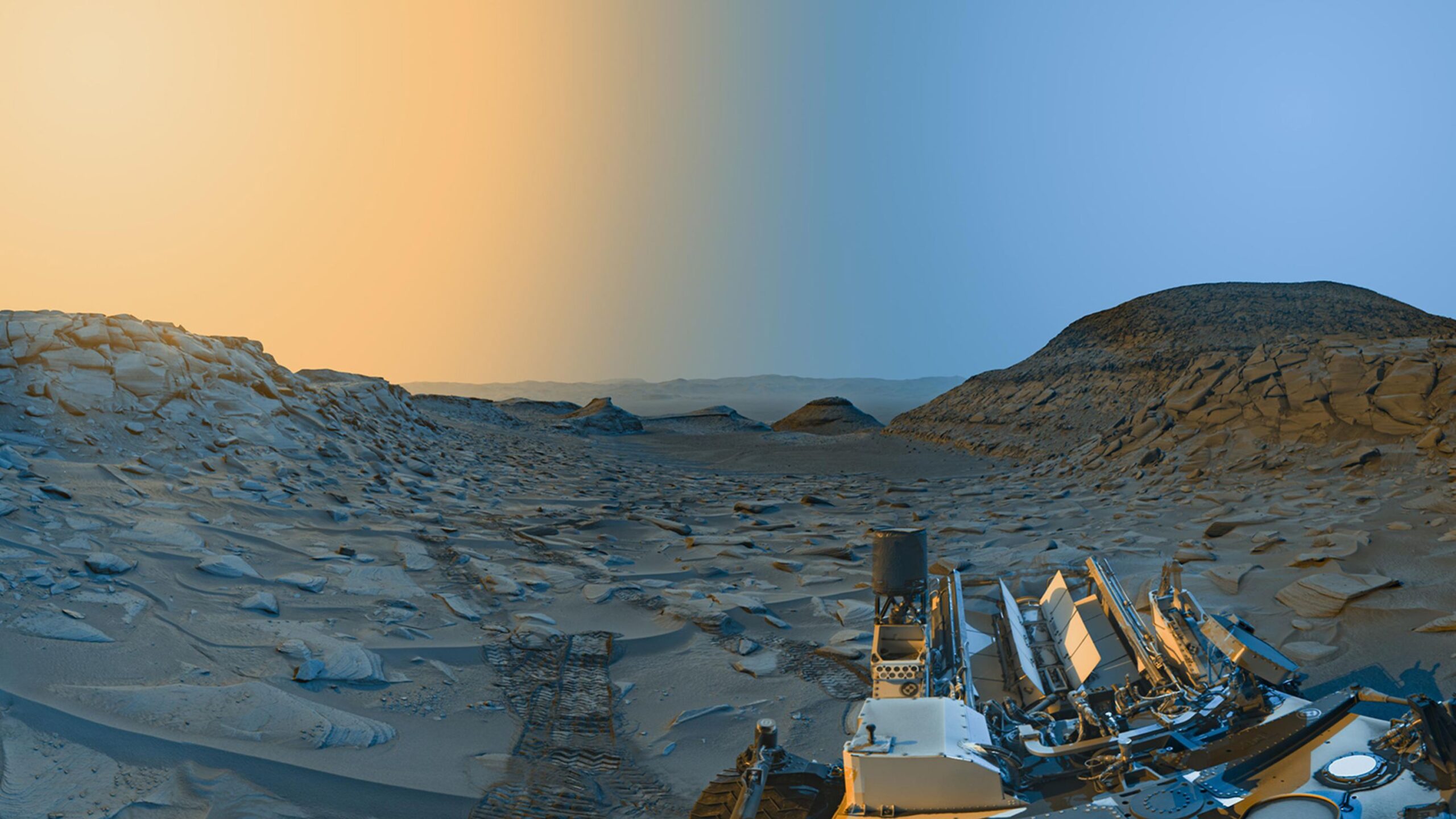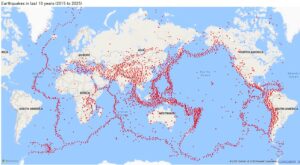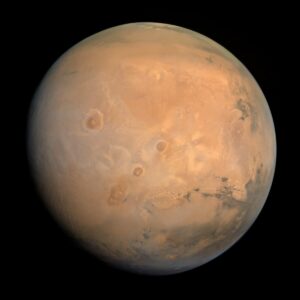Last week, the Trump administration released a presidential budget request that would cancel almost all NASA science missions in order to focus on putting humans on Mars. It’s mainly a showy, we-can-do-it project.
Mere weeks before, the CEO of a small San Francisco non-profit argued in a new paper that we need to start seriously considering terraforming Mars. The priorities of the two groups could not be more different.
The lead author of the paper, Erika DeBenedictis, received the prestigious Astera Fellowship to found Pioneer Labs, a small startup dedicated to designing microbes for terraforming. In The Case for Mars Terraforming Research, published last month in Nature Astronomy, she and her co-authors explain why terraforming studies are important. They also address how little we still know about potentially terraforming Mars. The main takeaway: Mars is not ready for humans, and humans are not ready for Mars.
Why bother with all this, anyway?
For some readers, the question of colonizing Mars isn’t why, but how. If that’s you, feel free to skip ahead. But others might approach the matter with more skepticism.
Space colonization has become a political byword, but opposition is far from new. Perhaps most famously (at least among us science geeks), Gil Scott-Heron’s 1970 poem Whitey on the Moon contrasted the poverty conditions of many Black Americans with the perceived excess of the Apollo missions.
“I can’t pay no doctor bill (but Whitey’s on the Moon),” he wrote. “Ten years from now, I’ll be paying still (while Whitey’s on the Moon).”
From this vantage point, is spending billions on terraforming research anything more than a nationalist vanity project? DeBenedictis and her team argue that it is important.
“Technologies developed for Mars habitation, such as desiccation-resistant crops…will probably benefit Earth,” they write.
In an older interview with the Astera Institute, DeBenedictis summed up this aspect of the paper’s argument.
“Researching the possibility of a green Mars involves an infinite number of steps, all of which are in the right direction. How do we make human presence net-positive for the surrounding environment, rather than net-negative?”
Unlike the Trump administration, the study doesn’t advocate for current human spaceflight to Mars. Instead, it proposes taking the questions of colonization seriously, starting from first principles. Should we? How would we? What would the future of Mars look like?
Not just science fiction
You’d be forgiven for assuming terraforming is just science fiction. But unlike faster-than-light travel, this staple of space adventure has a real scientific basis behind it.
The new study lays out a timeline for terraforming Mars, and it’s a lot more rapid than you might expect. They propose that careful bioengineering can accelerate the formation of an ecosystem. Instead of the billions of years it took Earth to turn green, Mars could achieve it in a few decades.
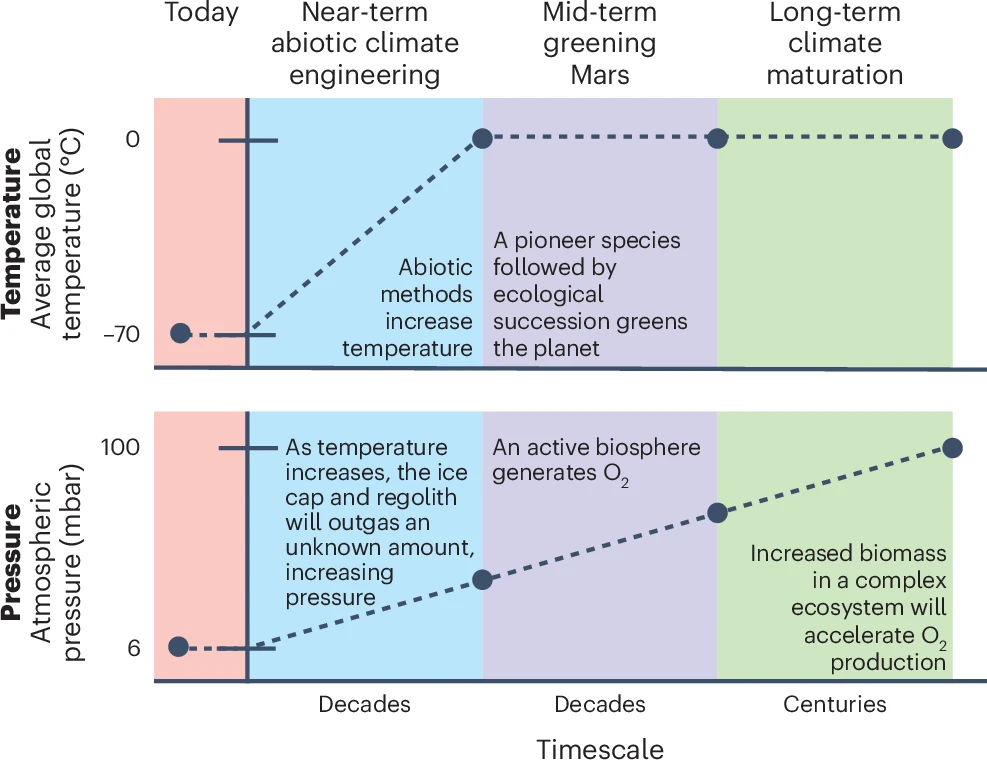
The top timeline shows how terraforming would interact with temperature, while the bottom shows its relationship with atmospheric pressure. Pressure is a key dial on the feasibility of life, limiting the regions in which it can exist, even on Earth. Photo: DeBenedictis et al., 2025
The key to this rapid progression would be the development of microbes that thrive on Mars. Bypassing the labyrinth of evolution, humans could combine traits of Earth-based microbes such as temperature tolerance (surface temperature on Mars swings from -150°C to +20°C), invulnerability to fierce radiation and toxic gas, and no preference for atmospheric pressure. Such species could lead to an algae-covered Mars within decades.
How scientists would prevent such hardy microbes from disrupting ecosystems on Earth, the team doesn’t address.
The natural advantages of Mars
According to their estimates, if all the water ice on Mars melted, it could form 10,000,000 km2 of ocean at a depth of 300m. That’s far less than the amount of liquid water on Earth, but it’s enough to support long-term life on Mars.
In turn, the melting of Martian ice caps, which include both water and carbon dioxide ice, would increase atmospheric pressure. A thicker atmosphere would lessen the dramatic temperature swings between Martian night and day, in turn allowing the proliferation of life.
Martian soil also includes the necessary components for agriculture. Science fiction author Andy Weir exploited this so his marooned protagonist could grow potatoes in the hit 2017 science-fiction novel The Martian.
Such calculations have led planetary scientists to scour Mars for evidence of past life, mostly through remote sensing. (Soil samples are notoriously difficult to return to Earth for testing.) So far, they haven’t found any evidence of life, only evidence of conditions necessary for life at some point in the distant past.
So, are we missing something?

Matt Damon grows potatoes on Mars in ‘The Martian.’ The movie is great, but Andy Weir’s third book, Project Hail Mary, manages to surpass it. Photo: 20th Century Fox
The big unknowns
This is where DeBenedictis and Pioneer Labs’ vision of Mars colonization research differs most dramatically from that of Elon Musk and SpaceX. The gist of the new paper is not that terraforming should happen now, but that scientists from different disciplines need to consider terraforming when designing future projects.
In planetary science, for example, the paper argues for continued research on everything we don’t know about Mars. For instance, ice covers one-third of the planet. What’s under it? More ice? Networks of caves? Liquid water? The answer could portend wildly different visions of a bioactive Mars.
They also call for extensive simulations of dust storms, a notable feature of Martian weather. Right now, planetary scientists understand dust storms on Mars fairly well. But how would dust change the atmosphere in a warmer, wetter Mars? How would the new climate alter the strength of the dust storms?
But perhaps the biggest open question for terraforming is whether Mars has enough electron acceptors to support life. Electron acceptors are molecules capable of transferring electrons — and thereby energy — down a chemical chain. They include carbon dioxide and nitrates, and are vital not only for photosynthesis, but also for human respiration.

The Martian lander Perseverence photographed this timelapse of a small dust cloud traveling across the surface of Mars in 2021. Full dust storms cause blackout conditions. Photo: NASA/Wikimedia Commons
Where to go from here
Despite their affiliation with Pioneer Labs, which focuses on microbe engineering, the authors don’t call for the scientific community to jump on the terraforming bandwagon.
“While the possibilities are exciting, anything as big as modification of a planetary climate has major consequences and would require careful thought,” they write. “But until we do more research, we do not even know what is physically or biologically possible.”
In other words: research now, decide later.
“Priorities include quantifying H2O, N2, and CO2 reserves…soil sample return, test missions for proof of concept of warming methods, and climate feedback studies,” they explain, linking various NASA science directives with terraforming questions.
Current NASA goals for Mars already support human exploration, they add. “No abrupt change of course is needed.”
But an abrupt change of course is in store for NASA. The presidential budget request cancels all Mars research missions except for the Martian Moons eXploration, which is mostly funded by the Japan Aerospace Exploration Agency. It still wants to put colonists on Mars, but without laying the scientific groundwork first. If science takes up Mars terraforming research, it will be without the United States.
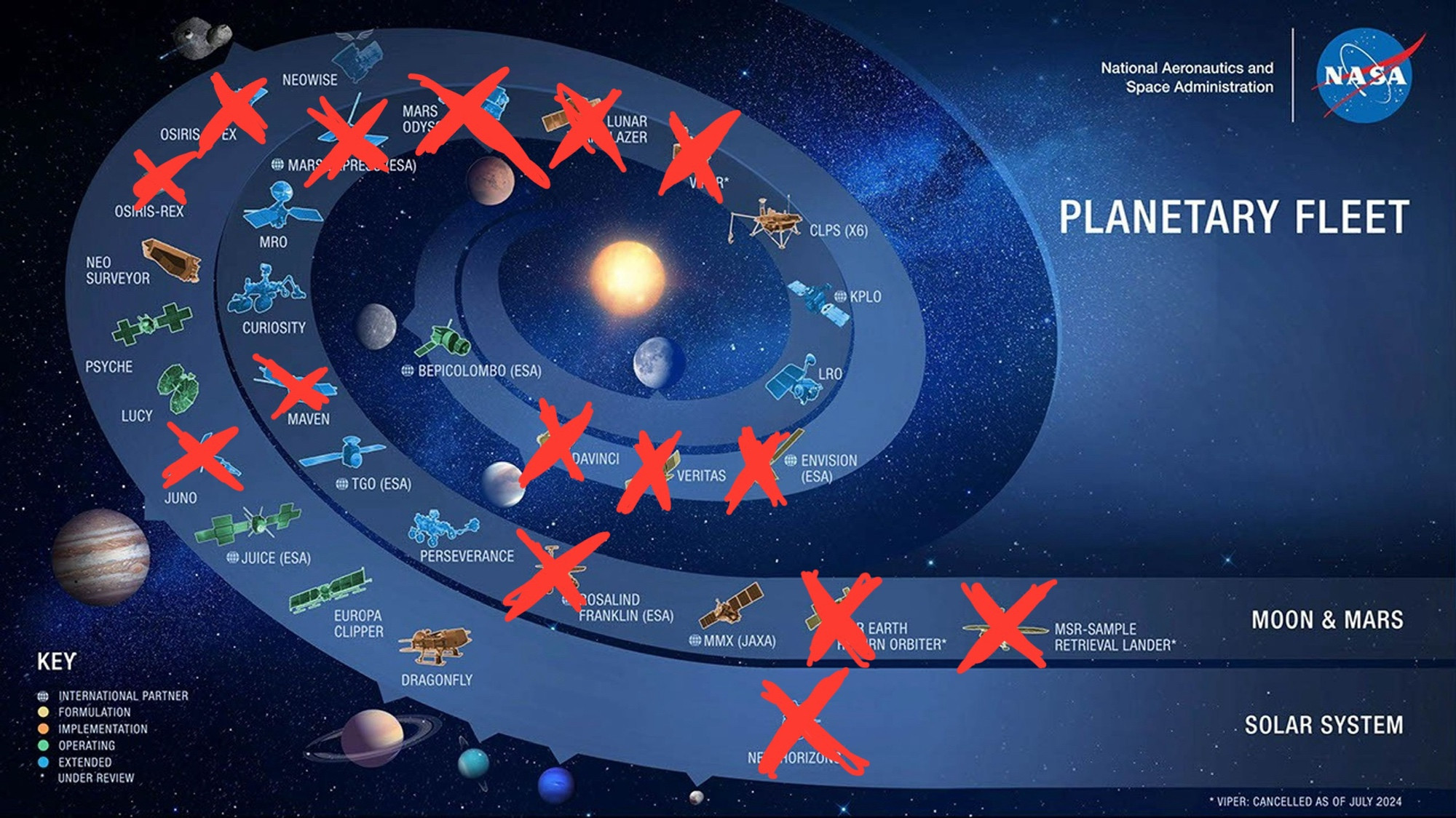
The NASA budget request, if approved by Congress, would cancel many of the agency’s planetary science missions. Photo: NASA/James Tuttle Keane
